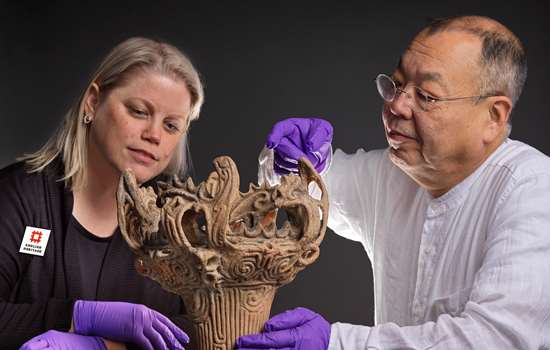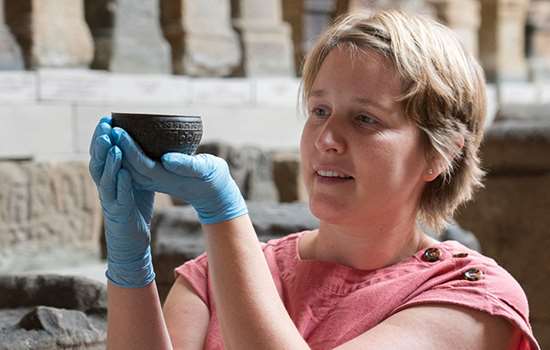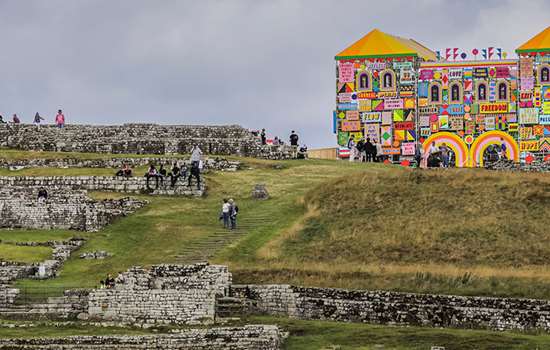01/10/2019
Bob Marley awarded English Heritage Blue Plaque
Renowned Jamaican singer-songwriter joins the likes of Jimi Hendrix, John Lennon, George Frideric Handel and Wolfgang Amadeus Mozart.
The pioneering reggae musician and cultural icon Bob Marley (1945–1981), whose album Exodus was rated by Time magazine in 1999 as the most important of the twentieth century, has been honoured with an English Heritage blue plaque.
The plaque marks number 42 Oakley Street, the Chelsea house where Marley lived in 1977. It was while living here that he and the Wailers finished recording the afore-mentioned album, which featured some of his biggest hits, including ‘Jamming’, ‘Waiting in Vain’, ‘Three Little Birds’ and ‘One Love’. With this address as his Chelsea home, Marley said he regarded London “as a second base,” often playing football with his bandmates on the pitches at nearby Battersea Park.
Blue Plaques Panel member, David Olusoga, said:
'Bob Marley was the first superstar to emerge from the developing world. More than a brilliant musician, he became a cultural icon who blazed a trail for other black artists.
It’s wonderful to – finally – be able honour him with a blue plaque here on Oakley Street today, after all the time and determination that went into proving that this was indeed Bob’s house. Thanks to new testimonies there is no longer any doubt.
While the number of blue plaques to black and Asian figures from history is still unacceptably low, Bob Marley’s plaque is a testament to how our scheme is changing, as English Heritage continues to work to overcome the obstacles that have led to this underrepresentation.'
CELEBRATING OUR DIVERSE HISTORY
Currently only 4% of the 900 plus blue plaques across the capital are dedicated to black and Asian figures from history. This is partly explained by the low number of public nominations fulfilling the blue plaque criteria and by the all too frequent lack – or relative inaccessibility – of historic records establishing a definitive link between the person in question and the building in which they lived. Marley is a case in point, being absent from the sources usually used to confirm addresses, such as electoral registers and phone directories.
A year after it became an independent charity in 2015, English Heritage established a BAME working group tasked with advising on diversity in the Blue Plaques Scheme. That same year, English Heritage’s Blue Plaques team opened a cold-case review initiated by both our Senior Historian, Howard Spencer, and the BAME working group – thanks to new and re-examined evidence, the plaque commemorating Bob Marley’s house on Oakley Street was approved in 2017.
The most tantalising piece of primary evidence arose from Marley’s arrest for possession of cannabis on 10 March 1977, along with his bassist Aston ‘Family Man’ Barrett. On the court records, Barrett’s address is given as 42 Oakley Street, and though Marley’s is cited as 27 Collingham Gardens, anecdotal evidence suggests that he may have given this address – where his backing singers were staying – in a bid to prevent the police from searching Oakley Street for drugs. The unanimous recollection of those who were contemporary witnesses is that Oakley Street was both the band headquarters and Marley’s own primary address at this time.
It was during the band’s residence at this four storey terraced house in Oakley Street, that the later stages of the recording and production of Exodus were carried out. According to Marley’s long-time manager, Don Taylor, the musician’s habit while living here was to rise late and play football in Battersea Park for what was left of the morning, before going to the studio, where he would often remain until the early hours.
HOW ARE BLUE PLAQUES AWARDED?
The London Blue Plaques Scheme celebrates the link between significant figures of the past and the buildings in which they lived and worked. All nominations received by English Heritage, including those generated by the new working group, are judged by the same strict criteria:
- they should be regarded as eminent within their own profession or calling,
- their achievements should have made an exceptional impact in terms of public recognition or their achievements deserve national recognition,
- they must have been dead for twenty years,
- they should have lived in London for a significant period, in time or importance, within their life and work,
- the London building in which they lived or worked should still survive and must not have a significantly altered exterior.
Other musicians commemorated by the Blue Plaques Scheme include:
- Dame Clara Butt, 7 Harley Road, Swiss Cottage
- George Frideric Handel, 25 Brook Street, Mayfair
- Jimi Hendrix, 23 Brook Street, Mayfair
- Leslie ‘Hutch’ Hutchinson, 31 Steele’s Road, Chalk Farm
- John Lennon, 34 Montagu Square, Marylebone
- Jenny Lind, 189 Old Brompton Road, South Kensington
- Freddie Mercury (Fred Bulsara), 2 2 Gladstone Avenue, Feltham
- Dame Nellie Melba, Coombe House, Devey Close, (off Beverley Lane), Coombe
- Wolfgang Amadeus Mozart, 180 Ebury Street, Belgravia
- Elisabeth Welch, Ovington Court, Ovington Gardens, Kensington
Nominate someone for a blue plaque today.
Discover more about the history of the Blue Plaques Scheme.
For more from English Heritage, follow us on Facebook, Twitter and Instagram.



